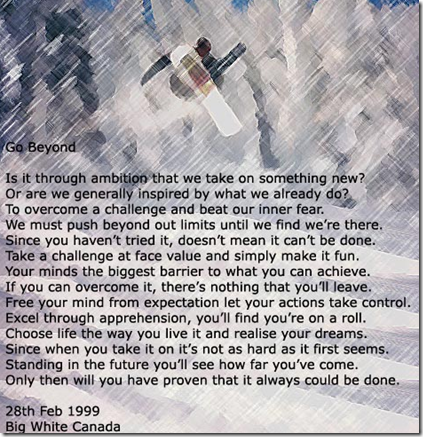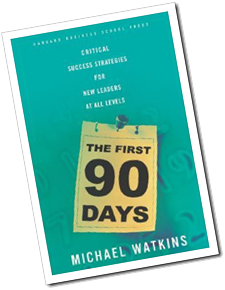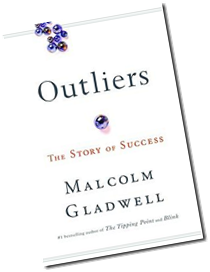Looking Back Over the Last 100+ Days
Today is my last day acting in the team lead role and I want to share some of the insights and experiences that I have had over the last 100+ days. Microsoft has phenomenal development programmes and fantastic people that make it truly a great place to work and grow. As suggested during our leadership offsite “These are the Good Old Days”.
I wrote the poem below, when I was 22. I had just left the company that I started at university and was learning to snowboard during a backpacking holiday across Canada. At the time I didn’t realize I was transitioning but I was trying to free myself from a structured path to plan a future that I was passionate about.
30 days into the new role I was encouraged to read a book titled The First 90 Days.
The First 90 Days provides a framework for transition acceleration that will help leaders diagnose their situations, craft winning transition strategies, and take charge quickly.
There were some real gems in this book the conceptual backbone of the book outlines the ten key challenges when starting a new role.
- Promote yourself. Perhaps the biggest pitfall you face is assuming that what made you successful to date will continue to do so. Take a mental break from your old job and prepare to take charge in the new one.
- Accelerate your learning. Getting acquainted with a new role can feel like drinking from the fire hose. Be systematic & focused about what and how you choose to learn.
- Match strategy to situation. Diagnose the business situation accurately and clarify the challenges and opportunities. STARS model
- Start-up – you assemble the capabilities to get a new business off the ground
- Turnaround – you take a unit that is recognized to be in trouble and work to get it back on track
- Realignment – your challenge is to revitalize a unit that is drifting into trouble
- Sustaining-Success – you are shouldering responsibility for preserving the vitality of a successful organisation
- Secure early wins. Early winds build credibility and create momentum.
- Negotiate success. You need to build a productive working relationship with your new boss. This means planning a series of critical conversations about the situation, expectations, style, resources and personal development.
- Achieve alignment. The higher you rise the more you play the role of organization architect.
- Build your team. evaluate team members. You need to be systematic and strategic in approaching the team building challenge.
- Create coalitions. Supportive alliances, both internal and external are necessary.
- Keep your balance. Preserve your ability to make good judgements
- Expedite everyone. Help everyone in your organization accelerate their own transitions.
Reading through the Corporate Athlete got me back to the gym two days a week.
Executives are, in effect, "corporate athletes." If they are to perform at high levels over the long haul, they must train in the systematic, multilevel way that athletes do. Rooted in two decades of work with world-class athletes, the integrated theory of performance management addresses the body, the emotions, the mind, and the spirit through a model the authors call the performance pyramid. At its foundation is physical well-being. Above that rest emotional health, then mental acuity, and, finally, a spiritual purpose. Each level profoundly influences the others, and all must be addressed together to avoid compromising performance. Rigorous exercise, for instance, can produce a sense of emotional well-being, clearing the way for peak mental performance.
Mat opened my eyes to the motivating factors for technical people
Once we have enough money technical people are driven fundamentally by challenge mastery & making a contribution.
When the Profit motive gets unmoored from the purpose motive, bad things happen.
The company that is called out in the video has an interesting piece in last month’s CIO magazine (20 Oct 2010) - Atlassian showcases the value of innovation.
I learnt from Outliers and What the Dog Saw
Specifically, are smart people overrated? the story of the minor geniuses, the underdogs and the overlooked.
I was particularly engaged by the 10,000 hours to mastery and The Black Swan: The Impact of the Highly Improbable stories.
I spent a day learning the Situational Leadership Theory
The fundamental underpinning of the Situational Leadership Theory is there is no single "best" style of leadership. Effective leadership is task-relevant and that the most successful leaders are those that adapt their leadership style to the Maturity ("the capacity to set high but attainable goals, willingness and ability to take responsibility for the task, and relevant education and/or experience of an individual or a group for the task) of the individual or group they are attempting to lead/influence. That effective leadership varies, not only with the person or group that is being influenced, but it will also depend on the task, job or function that needs to be accomplished.
David Rayner presented our leadership team this little gem from TED - How complexity leads to simplicity
At the iPhone developers conference I was enthralled by Rowan Simpson’s Start-up Lesson’s presentation.
-
- Team. In spite of the “lone hero / inventor” myth, the reality is that it takes a wide range of skills to build an idea into a product, and a product into a business. Developers, designers, marketing experts, leaders, strategists, operational folks. Surround yourself with the right people for you and for your venture.
- Iterate. That amazing lightning flash moment of inspiration and invention? Sorry, its a myth. Most start-ups iterate, so be ready for your Big Idea to evolve. Build it, launch it quick, get people using it… remember: ‘If you are not embarrassed by the first version of your product, you’ve launched too late.’ (Reid Hoffman, founder of LinkedIn)
- Executed & Networked. Isolation and secrecy have no place in the successful start-up world. Your idea doesn’t have to be original, you don’t need to run around with NDA’s, you just need to have a compelling product or service that solves a customer’s pain. Get it out of the shed! Use your networks! If you have a remarkable solution to a real need, it’ll go viral, and that’s the best way to ensure:
- Build Momentum. Um, well, be ready for this to take longer than you think. Trade Me’s “overnight success” took 7 years. Remember that your early audience may be different from your mass market. Again, be ready to adapt your business & product to meet market needs. The key thing here is to get early sales, and continue the growth momentum. One approach is to set clear goals – have a number to obsess about. Measure the right things, and focus on optimising everything about your start-up. Find that 1 number and obsess over it. For Trade Me it was the number of reseller accounts.
- Smart Money. Yes, sometimes a buyer comes along with a big chequebook… but it’s a tough journey for lots of entrepreneurs. The key is to find an investor that recognises the value of your business model and the growth trajectory, and that you’ll add value to their business or investment portfolio.
- Stay Passionate. How’s this for a reality check:
Rowan recommended two books during his talk which both look like interesting holiday reading.
Then this morning on my final day in the office acting in the lead role Harvard Business Review has released a brand new study titled
Managing Yourself: Stop Holding Yourself Back
This research identifies five major barriers stopping people from becoming exceptional leaders and is well worth a read:
- Barrier 1: Overemphasizing Personal Goals. True leadership is about making other people better as a result of your presence—and making sure your impact endures in your absence. The decision to focus on others can feel dangerous. It forces you to take your eyes off your own welfare and to stop scanning the horizon for predators. Risk aversion is a protective mechanism wired into our DNA; that’s why security concerns generally trump impact.
- Barrier 2: Protecting Your Public Image. Another common impediment to leadership is being overly distracted by your image—that ideal self you’ve created in your mind. Sticking to the script that goes along with that image takes a lot of energy, leaving little left over for the real work of leadership.
- Barrier 3: Turning Competitors into Enemies. One particularly toxic behaviour is the act of turning those you don’t get along with into two-dimensional enemies. Distorting other people is a common response to conflict, but it carries significant leadership costs. It severs your links to reality, making you reliably incapable of exerting influence. As you turn others into caricatures, you risk becoming a caricature yourself.
- Barrier 4: Going It Alone. Most people opt out of leadership for perfectly good reasons. The road, by definition, is unsafe. It leads to change, not comfort.
- Barrier 5: Waiting for Permission. Like risk aversion, patience can be a valuable evolutionary gift. It’s a main ingredient in discipline and hope. It helps us uncover the root cause of problems. It keeps us from hurting someone at the DMV. But patience can be a curse for emerging leaders. It can undermine our potential by persuading us to keep our heads down and soldier on, waiting for someone to recognize our efforts and give us the proverbial tap on the shoulder—a better title and formal authority.
It has been a fantastic opportunity to change and I wish all of you considering changes over this holiday period to take that first step and discover that you don’t know what you don’t know.
Merry Christmas





